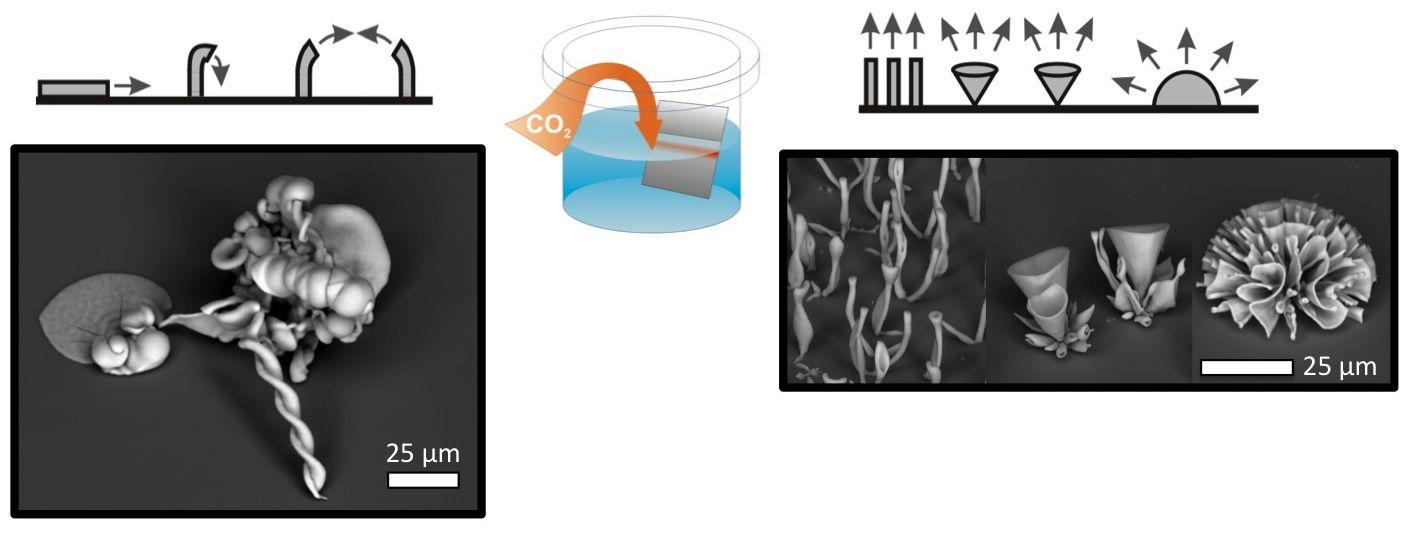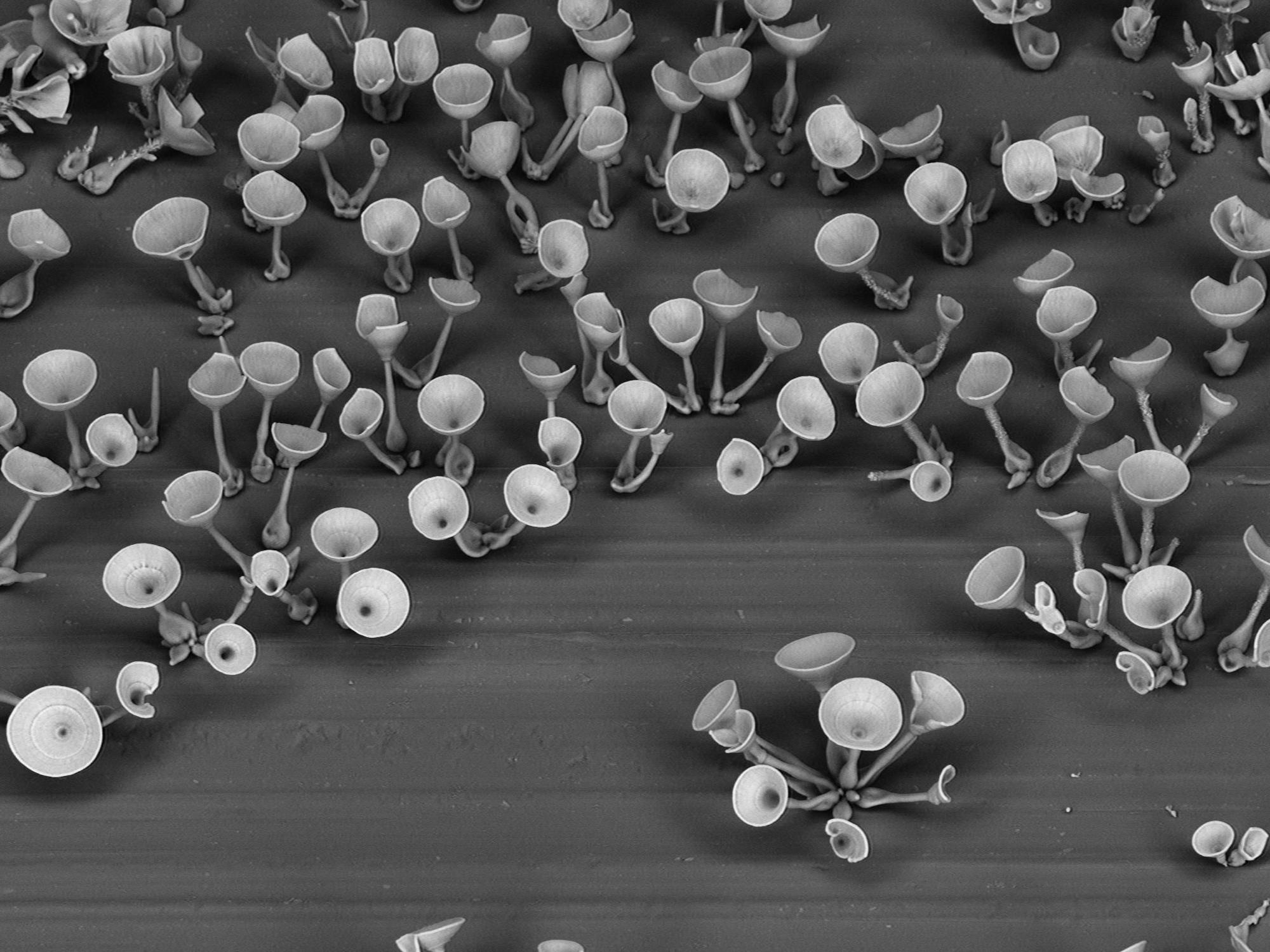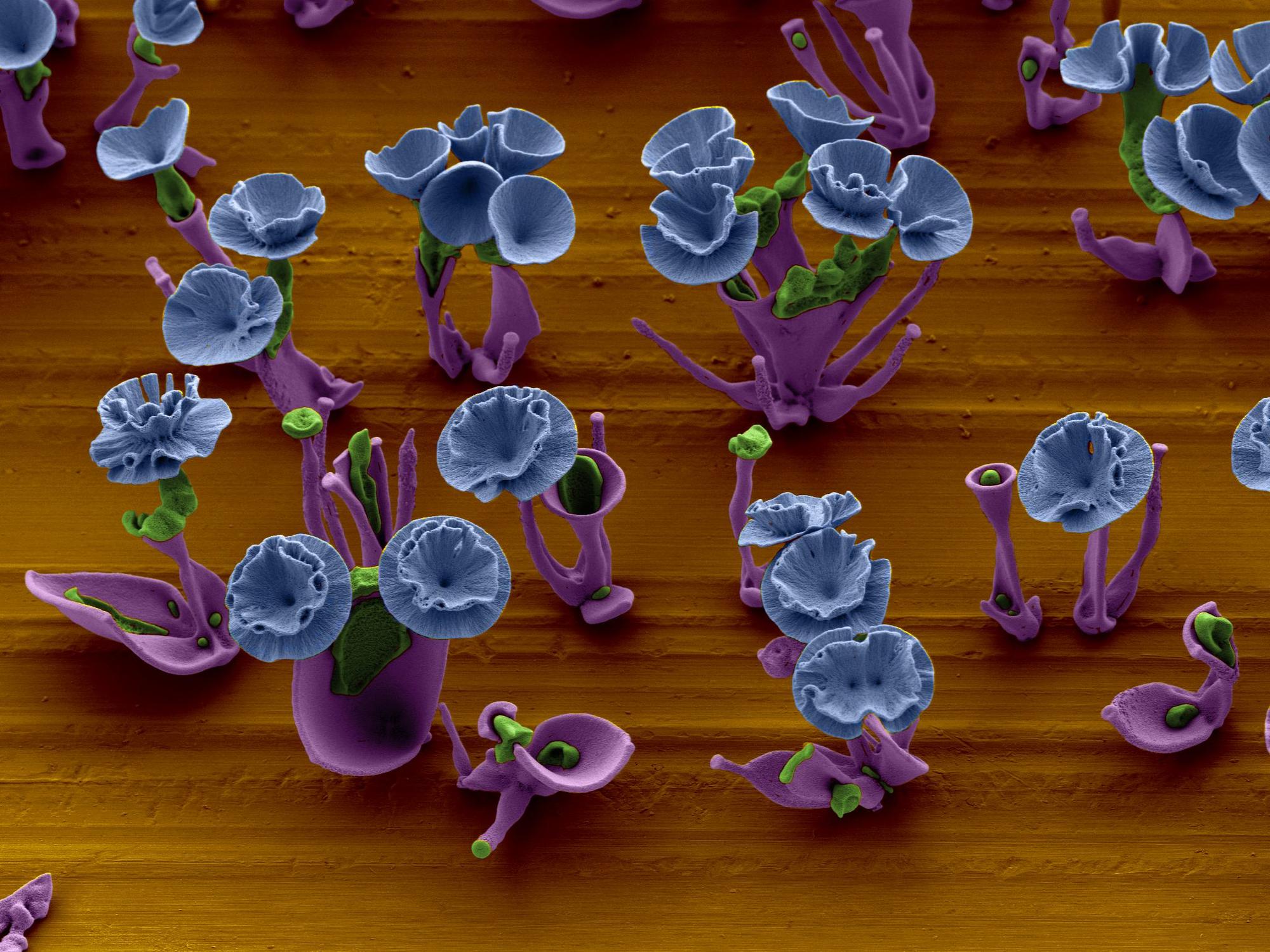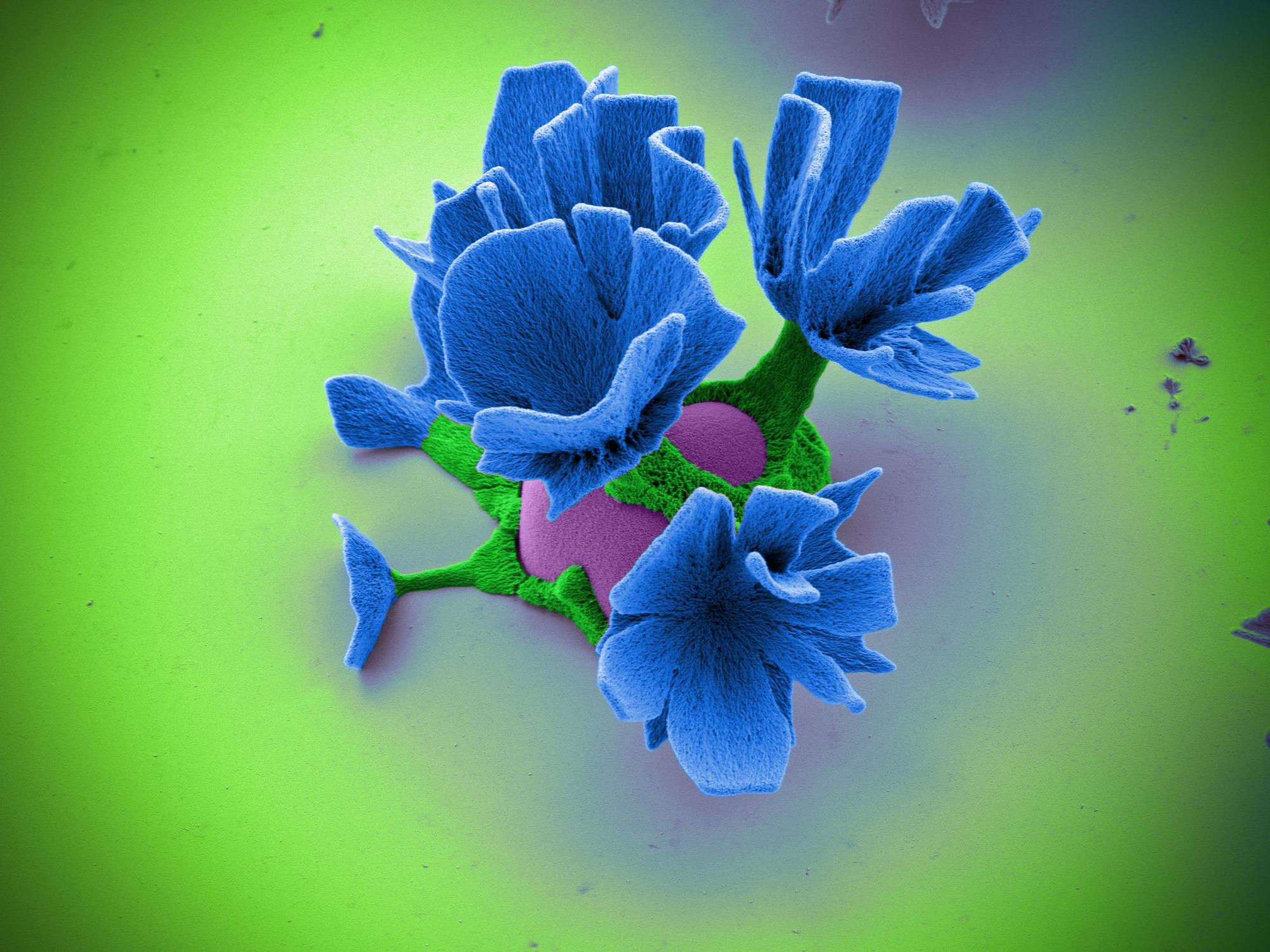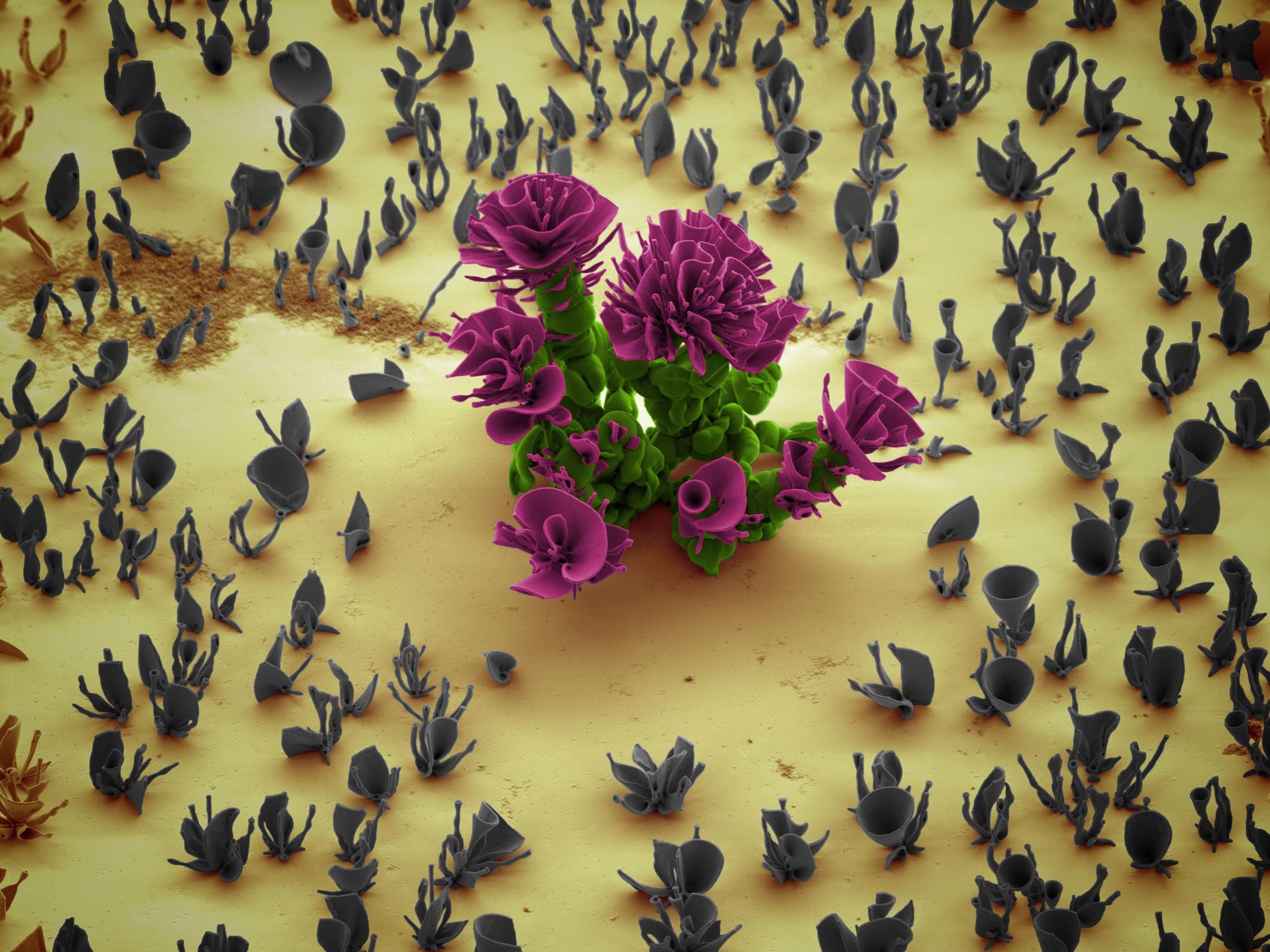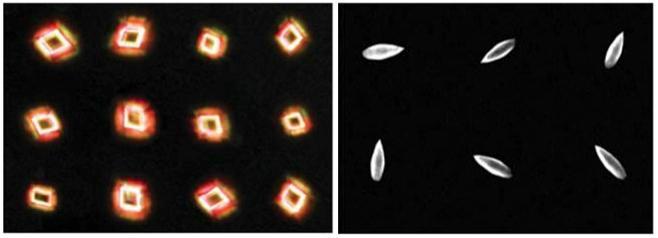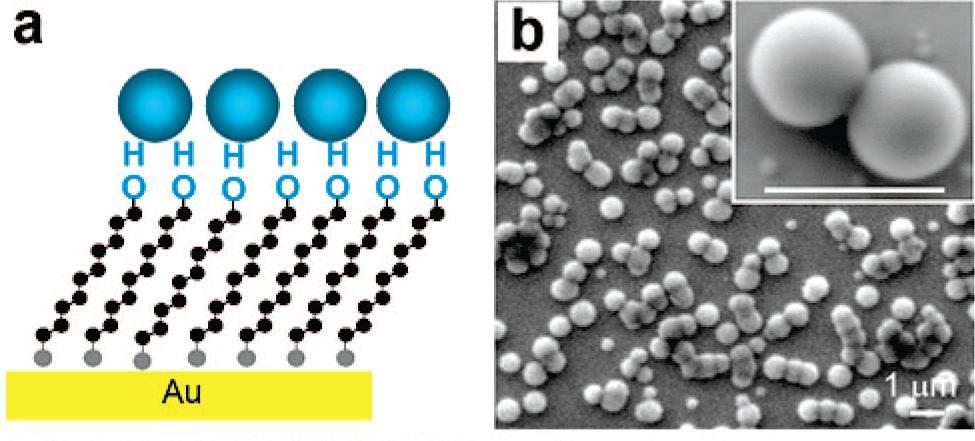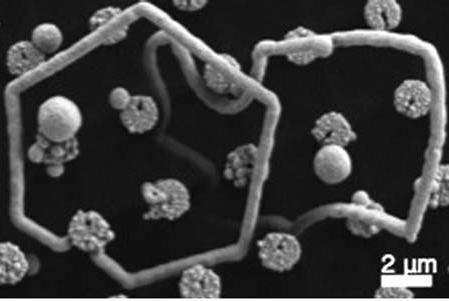Using only simple salts from the soil or water and only themselves as factories, living organisms from bacteria to sea sponges to mammals construct an endless variety of mineral architectures exquisitely patterned in 3D across the macro-, meso-, and nanoscales. Our studies have shown that inorganic crystallization is finely tuned at the molecular level by organized assemblies of proteins and cells, but the details of how this is achieved are still largely a mystery.
Crystal Growth
To uncover underlying principles we can adapt to create new designs, our group has pioneered the growth of crystals on surface-bound organic monolayers and discovered an unexpectedly rich, multilingual “conversation” that takes place between the organic layer and the growing crystal.
By deciphering the complex interplay of chemical, mechanical, and geometric information within the system, we have learned how subtle template adjustments can be used to control nearly every feature of crystallization, to generate asymmetry from symmetric components, and even to stabilize amorphous states and guide their transitions to patterned single crystals.
Yet even these advances remain humble next to the elaborate inorganic materials small creatures build from scratch, and we are exploring template nanotopography, amorphous-polycrystalline composites, mechanical stress, patterning and other features of the organic-inorganic interface that may take part in the generation of multiscale 3D complexity.
